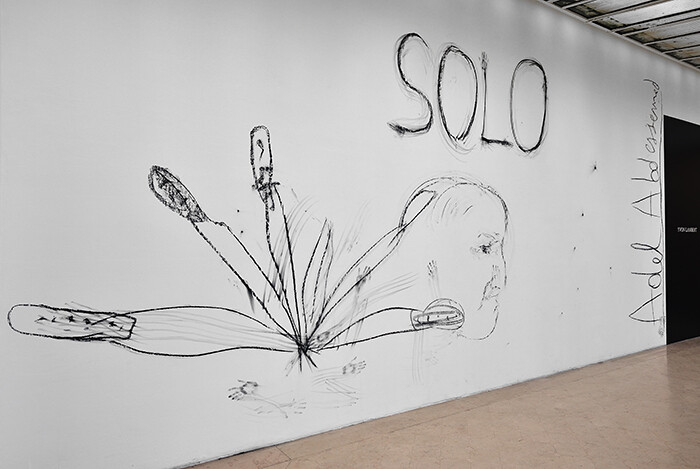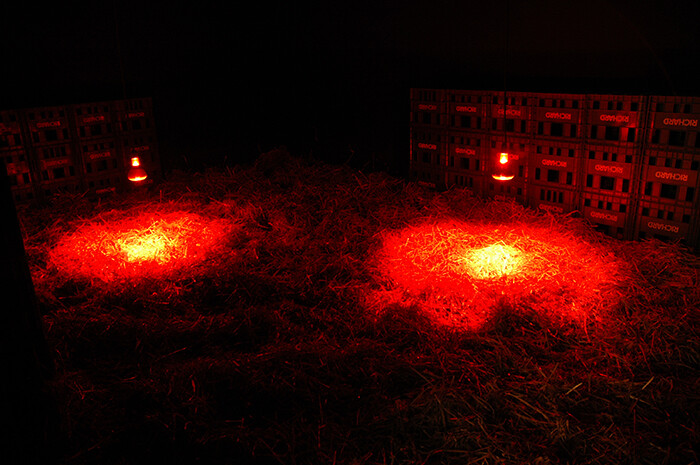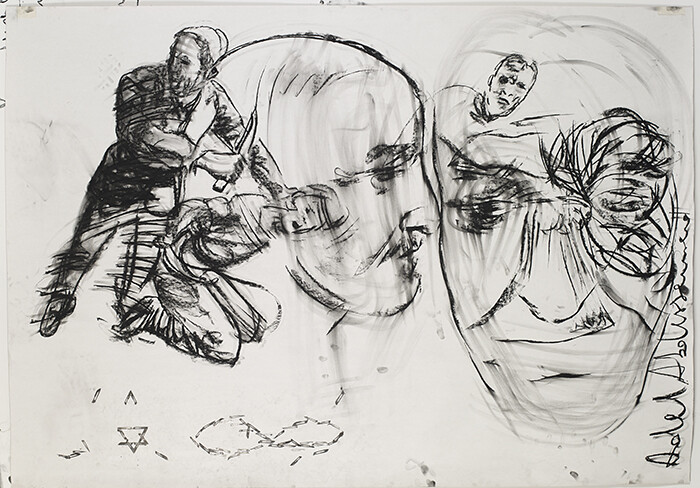The news that Yvon Lambert is closing his Paris gallery is hardly shocking. What is remarkable, however, is how long his run lasted. Fifty-plus years spent working with contemporary artists puts Lambert in the rare position of being both an art historical footnote and a current art market player. The first show he organized, in 1961 in his hometown of Saint-Paul-de-Vence, was a group exhibition titled “Modigliani to Picasso.” His final show, at the Paris gallery he has occupied since 1986, presents new work by Adel Abdessemed. The journey in between is a testament to Lambert’s longevity, adaptability, and influence.
Built up over the course of five decades, Lambert’s artist roster is lengthy and diverse, ranging from French BMPT Minimalists Daniel Buren and Niele Toroni to flashy young Americans like Shinique Smith and Nick Van Woert. Having made a name for himself in the late 1960s by introducing Conceptual and Minimalist artists—Robert Ryman, Carl Andre, and On Kawara among others—to French audiences who were still hooked on Pop Art, Lambert remained committed to showing “artists of [his] own time.”1 This pursuit obliged the gallery to continually evolve according to changing tastes, new movements and media, and a fickle art market.
In addition to the artists he chose to work with, Lambert’s avant-garde thinking extends to real estate and varied side projects. After a succession of small galleries on the Left Bank, Lambert made a bold move across the Seine to a large industrial space (a former prosthesis factory) in 1986. The first gallerist to open in the Marais, Lambert paved the way for dealers like Marian Goodman, Emmanuel Perrotin, and Thaddaeus Ropac. In 2003, Lambert created Le Studio, a space dedicated to the (relatively new) medium of artists’ moving image and video. Another extension of the gallery, Librairie Yvon Lambert (which opened in 2001), sells catalogues, rare publications, limited-edition artist books and objects, and editions published by Lambert’s own imprint. And then there’s his vast personal collection from which he donated 556 works, worth an estimated 90 million euros, to the French state in 2012. With the closing of the gallery, Lambert will focus his attention on the Collection Lambert in Avignon, which is set to reopen to the public following renovations to its eighteenth-century hôtel particulier in the summer of 2015.
In hindsight Lambert’s career resembles an art historical timeline marked with milestone moments from the second half of the twentieth century. Among them: the show in 1977 for which Gordon Matta-Clark dug a five-meter deep hole in the floor of Lambert’s Left Bank gallery titled Rendez-Vous, Sous-Sol (Descending Steps for Batan) (1977) (notably thirty years before Urs Fischer did the same at Gavin Brown’s Enterprise in New York), and a Jean-Michel Basquiat exhibition in 1988, which would be the artist’s only solo show in Paris during his lifetime. More recently, in the 1990s, Lambert exhibited new talents who would become some of the most important artists of their time, namely: Nan Goldin, Anselm Kiefer, and Douglas Gordon. The youngest generation in Lambert’s stable—the up-and-comers who have helped bring the gallery into the new millennium—include Loris Gréaud, Mircea Cantor, and Jill Magid. Which brings us to the present and final exhibition. Though Lambert and Abdessemed have collaborated previously (on a book: Les Livres de AA, published earlier this year), the artist has not had a show at the gallery until now. Given Lambert’s perpetual forward motion, it seems fitting that his final exhibition also marks a first.
Not that Lambert is opposed to self-historicizing or nostalgia. In 1972, when his Paris gallery had been open for just five years, he invited artists who had previously shown with him to propose new work for a group exhibition. The ambitious retrospective titled “Actualité d’un Bilan” [The Story So Far] featured Marcel Broodthaers, Christo, Sol Lewitt, Brice Marden, and Cy Twombly.2 Similarly, in 2006, Lambert celebrated the gallery’s 40th anniversary with the group exhibition “Message Personnel.” On this occasion, a panoply of past and present gallery artists (including Robert Mangold, Adam Pendleton, Jonathan Monk, and Lawrence Weiner) presented works personally directed by Lambert. Now, however, on the eve of the gallery’s closure, rather than a stocktaking eulogy, Abdessemed’s show is presented as an event in and of itself. Nonetheless, because context inevitably influences interpretation, “Solo” can’t escape its dénouement status. Intended or not, the works on view take on additional connotations of closure and finality.
The title “Solo” is telling. It not only underscores that Abdessemed alone has the honor of Lambert’s final exhibition, but references the fact that the artist’s current exhibition is, by design, his only show with the gallery. This underlying sense of singularity and finality is reiterated in the accompanying catalogue. Inscribed in Abdessemed’s handwriting on the first spread is the phrase: “Fuis, mon ami, dans ta solitude!” [Flee, my friend, into your solitude!] A translated citation from Friedrich Nietzche’s 1891 text Thus Spake Zarathustra, this imperative seems pointedly directed at Lambert.
The works on view follow suit. Hung in the gallery’s foyer, opposite the reception desk, The Traveling Players (2013) is a white marble bas-relief depicting Bill Clinton, King Hussein of Jordan, Egypt’s former president Hosni Mubarak, and former Israeli Prime Minister, Yitzhak Rabin, all straightening their neckties. Based on a press photograph taken in 1995, just before the signing of the Oslo Accords, this image of world leaders attempting conflict resolution between Israel and Palestine is a sad reminder that a comprehensive peace agreement remains elusive nearly 20 years later. Triggering feelings of anger, despair, and futility, this scene sets the tone for the rest of the exhibition.
Large, energetic charcoal drawings (all 2014) featuring images of violence line the walls of the main gallery space. Much of the imagery—soldiers, knives, a crucifix—is reprised from Abdessemed’s earlier works. For instance, Histoire de la folie shows a foot about to stomp down on two skulls. This work shares its title and subject matter with a 2013 video of Abdessemed’s foot crushing a skull. Similarly, the nude female in Cri recalls the artist’s 2013 sculpture based on news photographs of children fleeing a napalm attack during the Vietnam War. Sketchily drawn, and smudgy with fingerprints, the charcoals express the artist’s continued visceral struggle with themes of warfare, death, and destruction.
Two videos (both 2014) also on view in this room, are part of Abdessemed’s ongoing series in which the artist breaks various objects with his own foot. Deep Stroke, presented on a flat-screen monitor, adds a new element to the formula: Salma Hayek. Acting as a proxy for Abdessemed and wearing his signature cobalt blue work pants, the actress stands on the quay of Paris’s Canal Saint-Martin with a watermelon at her feet. In slow motion accompanied by a French-style waltz (an original composition by Jean-Jacques Lemêtre), Hayek raises her bare foot and crashes it down on the fruit causing the pink insides to burst onto the cobblestones. The sensual combination of a beautiful woman, sweet fruit, a dulcet score, and moody slow motion is in stark contrast to the video projected across the room. In Nuance, the camera focuses on a glowing incandescent light bulb resting on the floor. The filament grows increasingly bright for about a minute until, suddenly, Abdessemed’s unprotected foot stamps down, causing a loud, jarring crash as the glass shatters and the light goes out. Despite their very different moods, both videos impart a sense of fragility and conclusion.
At the far end of the gallery’s back room, a life-size sculpture depicting two figures initially appears to be made out of shimmering silvery feathers. Up close, however, the artwork’s violent subject matter and materials reveal themselves. Based on Caravaggio’s painting of Abraham about to sacrifice his son Isaac (Sacrifice of Isaac, 1603), Abdessemed’s sculpture places the artist in the position of Isaac and his own father in that of Abraham. Brandishing a large knife, father stands over son who kneels on the ground with his hands tied behind his back. Both bodies are covered with hundreds of glinting scalpel blades. In addition to evoking a divine test and a great historical painting, Abdessemed’s work takes on topical political connotations in light of recent beheadings carried out by ISIS soldiers in Iraq and Syria. Several more bas-reliefs adorn the walls on either side of the sculpture, two of which function neatly as bookends. Bracketing a period of approximately 4,000 years, Curiosity (2013–2014), a terracotta carving of the Mars rover hangs next to Stonehenge (2014), a landscape featuring England’s prehistoric monument carved in white marble. Considered in the presence of these symbols of the distant future and the ancient past, suddenly a 50-year career seems a mere drop in the ocean.
Yvon Lambert interviewed by Bertrand Lavier in “Yvon Lambert: For the Duration,” Art Press, no. 322 (April 2006): 57.
Images of the exhibition, taken by Eustache Kossakowski, can be consulted at: http://www.eustache-kossakowski.com/bilan.html (last consulted November 15, 2014).














